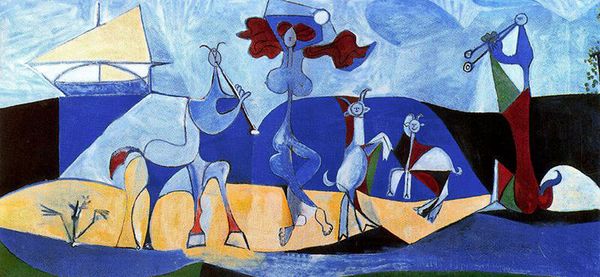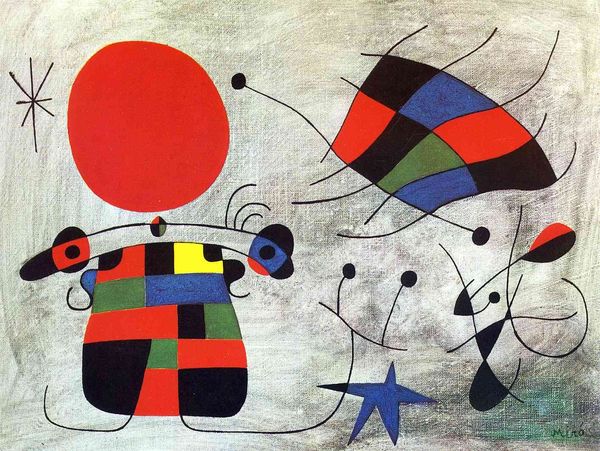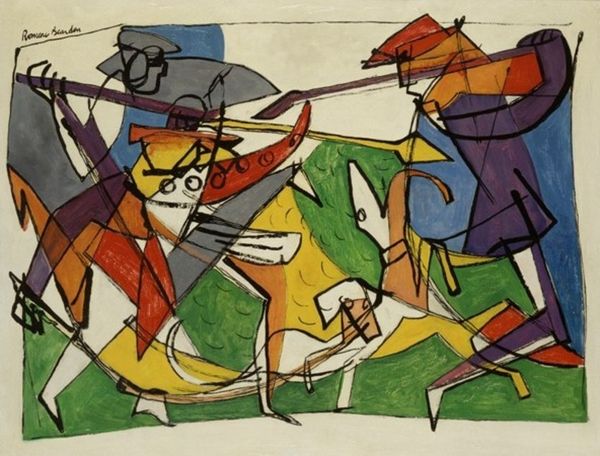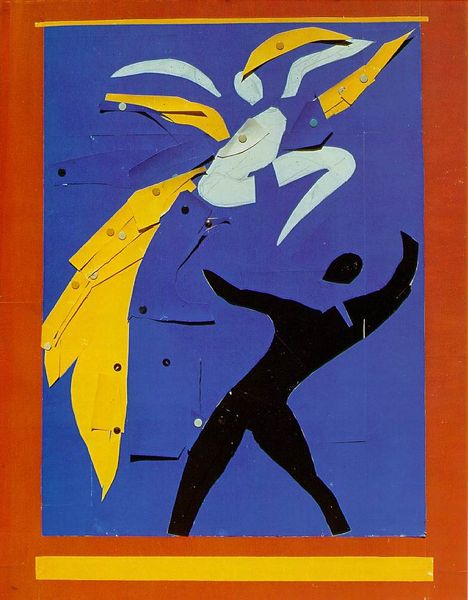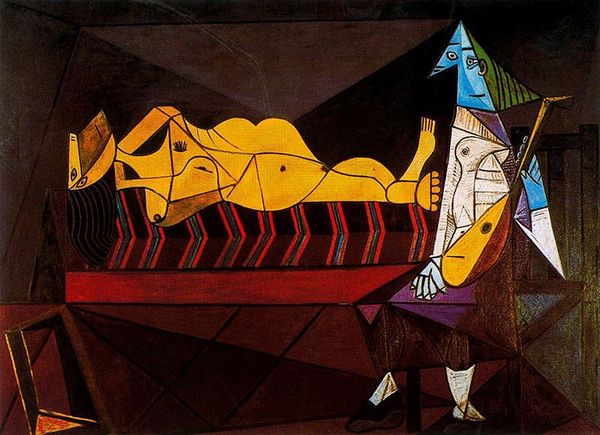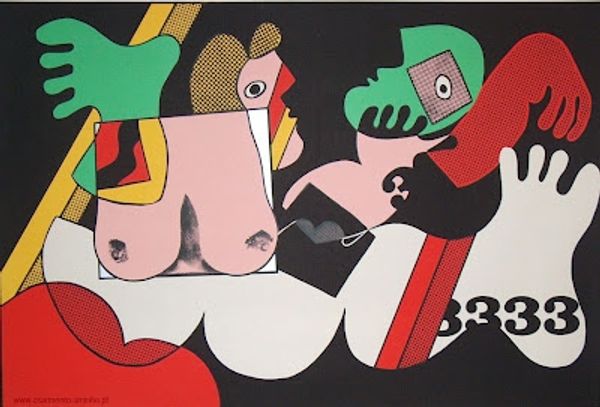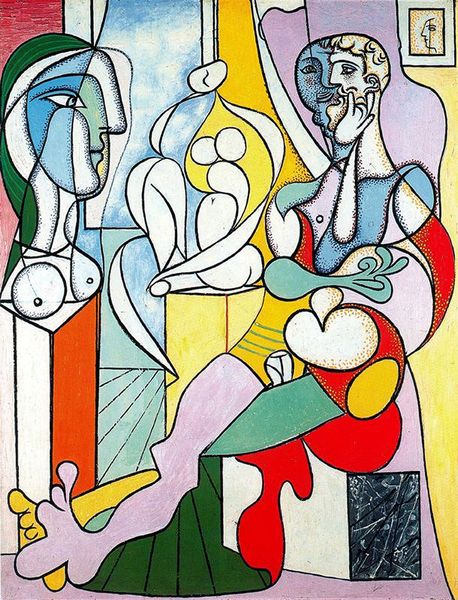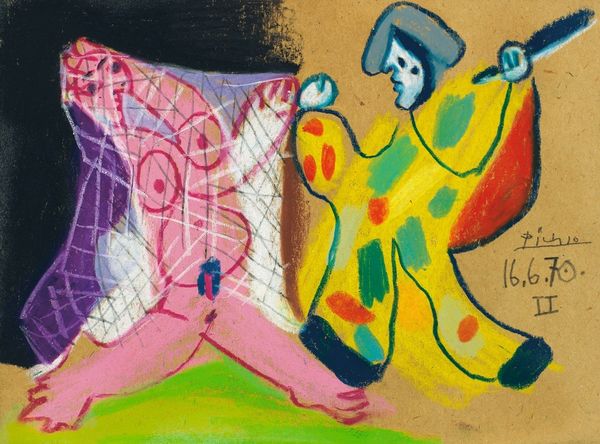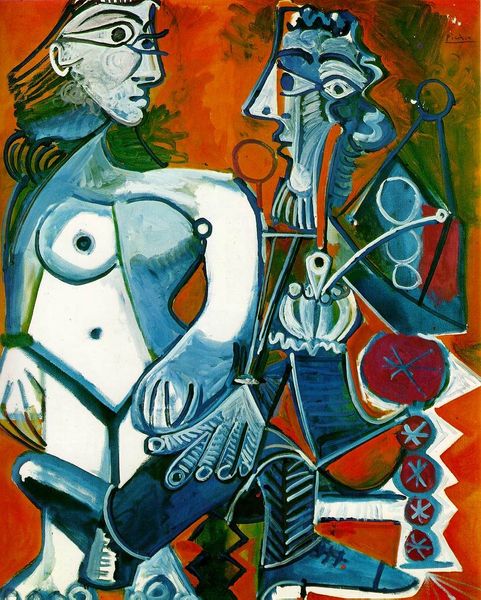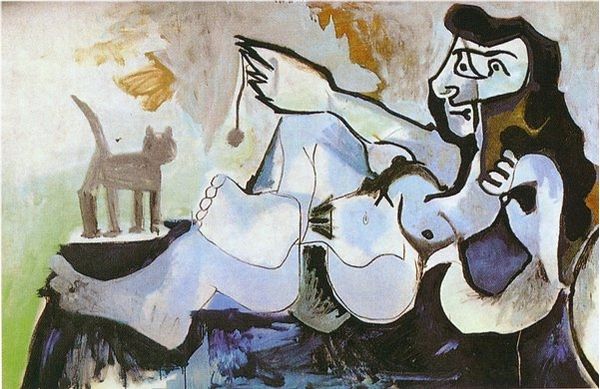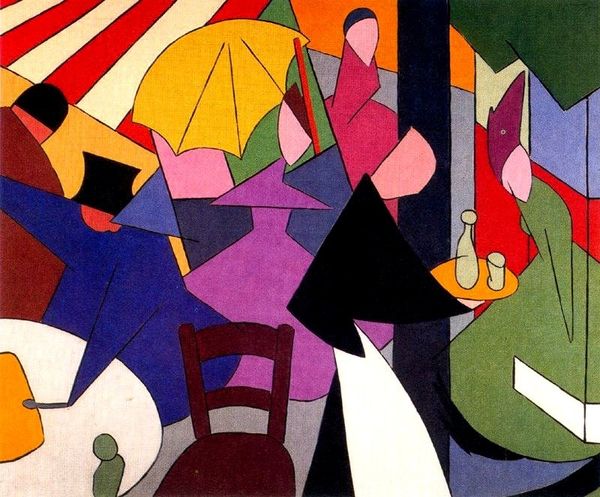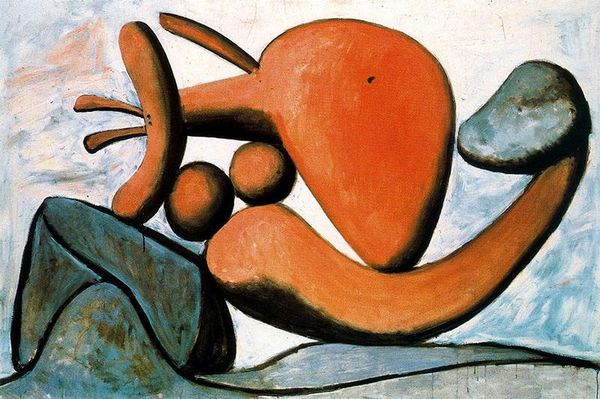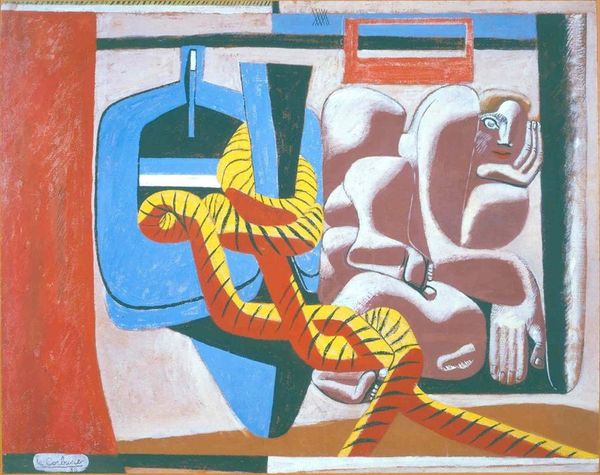
Copyright: Pablo Picasso,Fair Use
Editor: So, here we have Picasso’s "Beach Game and Rescue" from 1932, an oil painting currently residing in the Musée Picasso. It feels both playful and unsettling to me, like a dreamscape. What do you see in this piece, considering the historical context? Curator: The biomorphic forms hint at a disquieting eroticism, a subversion perhaps of the idealized female form traditionally presented in art. Picasso made this in the 1930s, a period marked by political unrest and the rise of totalitarian regimes in Europe. Can you see how this sense of anxiety might seep into even seemingly lighthearted subject matter? Editor: I see the angular figures now, it gives the artwork a disturbing impression, not as lighthearted as I had first interpreted. Could this be Picasso commenting on power dynamics or social roles? Curator: Precisely. Look at the ambiguous gestures and how the figures interact—are they truly rescuing someone, or is there something else at play? Consider, too, the male gaze prevalent in Picasso’s work and how these women might be constructed within it. This questions not just his art but the wider gender expectations that influenced and constrained society at the time. How does it affect your viewing experience? Editor: That’s such a compelling way to interpret it. Now, I find the sharp shapes unsettling in terms of gender expectations. I hadn’t considered the painting as a reflection of the period’s social climate before. Curator: These fragmented figures in ambiguous relation to one another echo broader societal fragmentations. This tension between the personal and the political can make engaging with art so rewarding. Editor: Absolutely. Thank you, that gives me so much to think about! Curator: It’s been a pleasure; this conversation enriches my understanding, too.
Comments
No comments
Be the first to comment and join the conversation on the ultimate creative platform.
